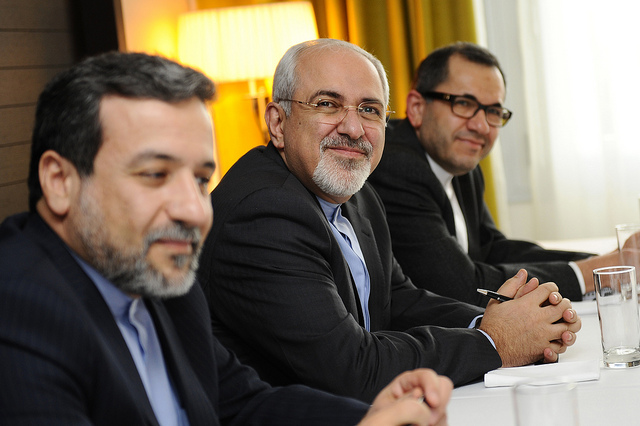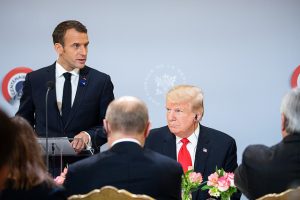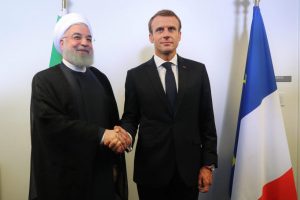by Jasmin Ramsey
The only certainty now about the talks between world powers and Iran over its nuclear program is that the negotiators have their work cut out for them. Other than occasional runaway comments to the press from France, and now China, the parties have remained tight-lipped about their closed-door dealings. However, judging by the tone of the briefings by the US and Iran coming out of the 5-day session that ended in Vienna last Friday, the pressure has increased as the self-imposed deadline looms. The negotiations can certainly be extended, but as a senior US official noted in a background briefing to the press:
We are all focused on reaching July 20th. As I’ve said before, if we get close and we need a few more days, I don’t think anyone will mind. But we are very focused on getting it done now. We have all agreed that time is not in anyone’s interest; it won’t help get there. And if indeed by the time we get to July 20th we are still very far apart, then I think we will all have to evaluate what that means and what is possible or not.
What are the odds of the now formally titled “Joint Comprehensive Plan of Action” being signed by Iran and the P5+1 (US, UK, France, China, and Russia plus Germany) at the end of July? Independent scholar and LobeLog contributor Farideh Farhi offered her take during a June 21 interview in Tehran with Iran Review:
Two factors work in favor of the eventual resolution of the nuclear dossier and transformation of US-Iran relations from a constant state of hostility and non-communication to interaction, even if not necessarily in constructive ways at all times. One is the seriousness of the negotiations and the political will on the part of the current administrations in both countries to prevent the nuclear dossier from becoming a pretext for war or spiraling into something uncontrollable. And the second is the high cost of failure now that both sides have invested so heavily in the talks.
But there are also factors that inhibit confidence in assuming a point of no return to status quo ante. First, in both countries there are political forces that oppose any type of interaction and lessening of tensions, although at this point my take is that opponents, encouraged by regional players, have more significant institutional power in the United States than Iran. In other words, along with political power, they have extensive policy instruments – the most important of which are legally embedded in the sanctions regime – that can be relied upon to undermine or prevent political accord between the two countries.
The second factor is the unequal power relationship between the two countries, which has consistently led various US administrations to be tempted by the argument that economic, political muscle, and military threats will eventually pay off and force various administrations in Iran to give in irrespective of domestic political equations and the stances they have taken within their own political environment. Currently, this second factor is part and parcel of broader indecision or uncertainty in the US’ strategic calculus regarding whether to come to terms with Iran as a prominent regional player or continue its three decade policy of containing it and alternatively Iran’s commitment to being an independent and powerful regional actor irrespective of fears in the neighborhood.
This dynamic of one side always wanting more than the other can give and/or alternatively being unwilling or incapable of matching concessions with what the other side deems as comparable concessions has been the source of impasse in negotiations. This is not to suggest that inflexibility or lack of realism only comes from one side. During the previous administration, Iran also miscalculated in its assessment of the leverage the United States could build through its ferocious sanctions regime in the same way the United States miscalculated in its assessment of the extent to which Iran could expand its nuclear program in the face of sanctions. As such, Iran’s expectation for the sanctions regime that took years to build to be lifted quickly and permanently is as unrealistic as the US expectation for Iran’s enrichment program to be significantly scaled back.
As to the impact of Iran-US direct talks, it is still possible for the unprecedented high profile direct engagement between the two countries in and of itself to lead to some sort of transformation in the relationship irrespective of the results of nuclear talks. If indeed the two countries’ foreign ministers or even presidents can continue to pick up the phone and talk to each other over matters of common concern or for the sake of de-escalating tensions, that by itself is an important achievement of nuclear talks and its significance should not be under-estimated. But this also depends on how the potential failure of nuclear talks is managed by both sides.
Read more here.
Photo: The Iranian nuclear negotiating team headed by Iranian Foreign Minister Javad Zarif (center) and Deputy Foreign Ministers Abbas Araghchi (to Zarif’s right) and Majid Takht-Ravanchi.






Good post. Let’s hope this doesn’t turn into one of those episodes where the participants end up cutting of their nose to spite their face.
Very informative. And I highly agree with this statement: “The second factor is the unequal power relationship between the two countries, which has consistently led various US administrations to be tempted by the argument that economic, political muscle, and military threats will eventually pay off and force various administrations in Iran to give in irrespective of domestic political equations and the stances they have taken within their own political environment. ”
Our over-reliance on subversive tools of military might and sanctions has actually worked against us. It’s one thing to build up military might for defensive purpose and to deter attacks on one’s homeland by other countries, it’s entirely another thing to use it to threaten (as in “all options are on the table”), to put it on display (as in sending naval forces to far away places or holding joint military exercises as a show of force), and to act like goon. Imagine, if you will, a thug in your neighborhood who waves his guns and knives as a show of force, looks at you menacingly, uses threatening language and sometimes takes very hostile actions. It’s hard to respect that person or to cooperate with him. We have been seduced by our own military and economic might, using it as a tool of coercion, and are surprised when it doesn’t achieve the expected goal. Because, eventually the rest of the world catches on to what we’re about. Regardless of whether they’re legitimate entities or not, eventually they’ll develop their own means of self-preservation. So when they can’t match us in military might they’ll concentrate what they are good at, terrorism, asymmetrical warfare, underground movements, etc. Case in point is AQ. Our conventional tools are now completely ineffective against them.
Iran will never give up on its demand to maintain and even enhance its centrifuge capability, which the West won’t be able to tolerate since even if you reduce stockpiles and other facets of its nuclear program, centrifuge capacity is the one determining factor in the ability to generate new stockpiles of weapons grade fuel. What will end up happening is that both sides will agree to extend the negotiating window since neither side can walk away from collapsed talks.
Ultimately, unless Iran budges on centrifuges, it’s doubtful the West will ever come to an agreement since that alone would cripple Iran’s nuclear program. Also, if the human rights abuses the past year under Rouhani continue, it’s likely in the wake of failed negotiations that the call to link human rights improvements to any treay agreement will only increase and justifiably so.
Great piece.